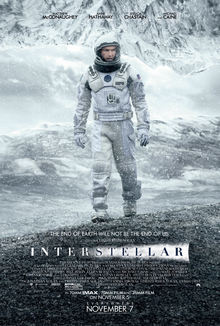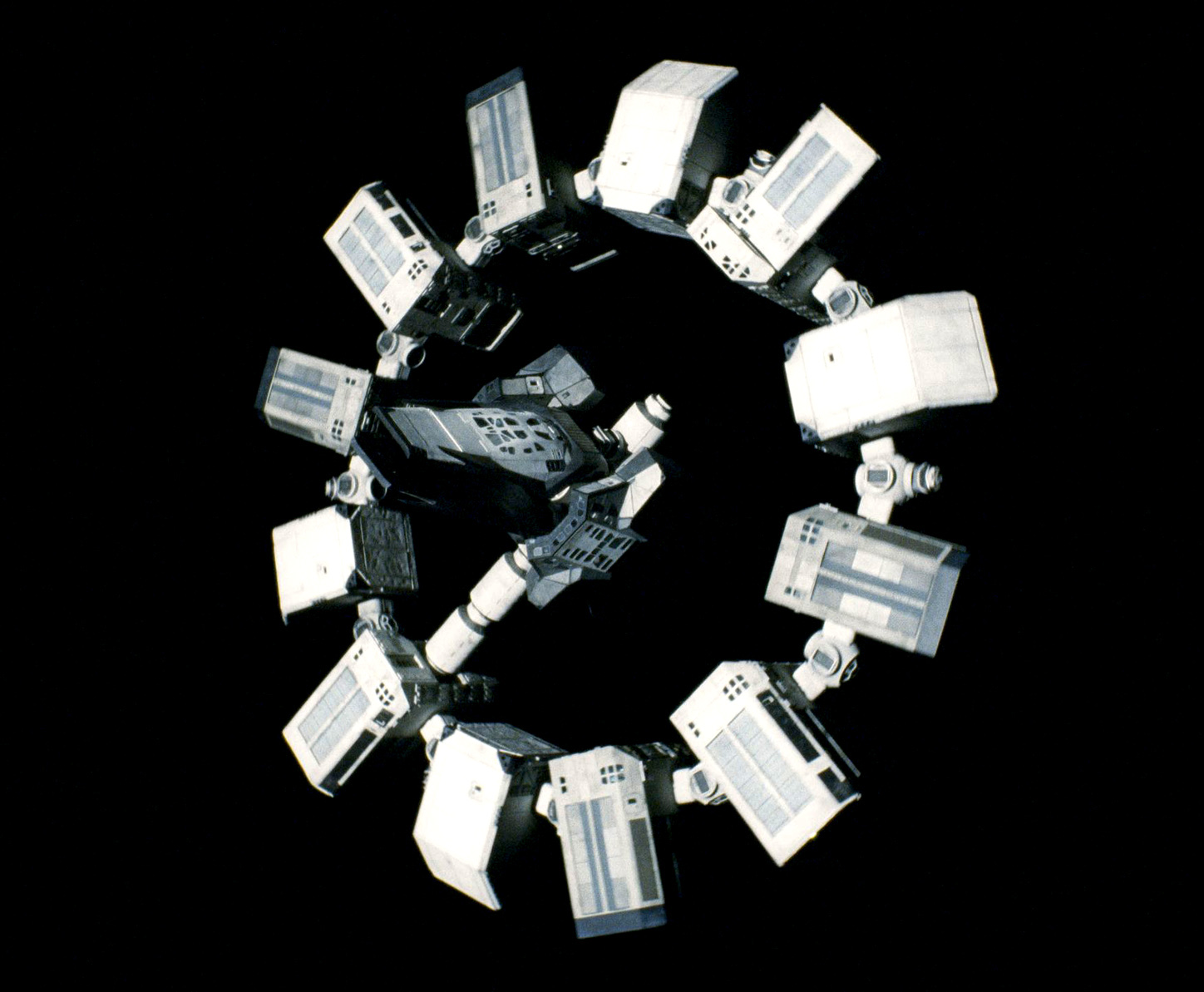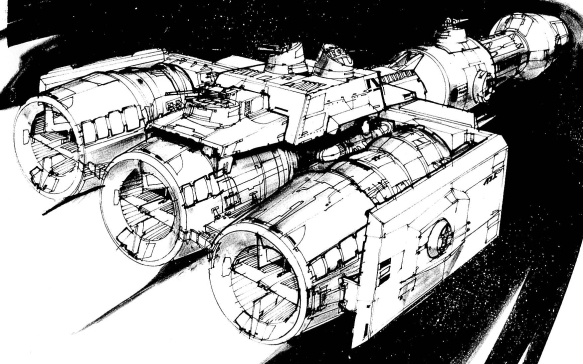
Synopsis:
Stanley Kubrick’s 1968 science fiction opus 2001 A Space Odyssey is an adaptation of Arthur C Clarkes book of the same name. An imposing Black structure provides a connection between both the past and the future, and a group of astronauts are sent to investigate the signals sent by it. The movie is split into four distinct acts: The Dawn of Man, The lunar journey in the year 2000, The Jupiter mission 18 months later, and journeying beyond the infinite void.
- (The first act follows primitive apes as they become more evolved from the monolith)
- (The second act follows Dr Heywood R. Floyd and his team eons later as they discover a similar object emitting a signal from the lunar surface to Jupiter)
- (The third act follows a team of astronauts 18 months later as they head to the Jupiter Signal sent by the monolith)
- (The final act follows Dr Dave Bowman as the monolith sends him through the void)
Monolith:

All four acts involve the presence of the Monolith, a large black structure that is always present when a species is on the cusp of evolution. This imposing construct is in many ways the key piece of structural design in the film.
The importance of the construct is made apparent through the cinematic techniques used by Stanley Kubrick. The director uses a combination of: low angles, ominous music, and strange placement locations to instill a sense of intrigue and foreboding within the audience.
In every scene that the monolith appears it’s placed within a setting that seems unnatural. First scene it appears in the middle of the desert, then in the middle of a crater on the moon, then orbiting around Jupiter, and finally in the middle of a bedroom.
One of the major reasons that the placement of the monolith is so important is due to the film’s emphasis on creating a realistic environment. All of the designs used for the interiors and exteriors are cemented into a sense of reality. This means that each element of the architectural design fits into a specific design concept, whereas the Monolith is always placed within an unusual and ill-fitting setting. This provides the sense of the unnatural within the scenes themselves.
Monolith/ HAL:

The links between the evolutionary creators and man’s sentient creations can be seen through their designs. The HAL 9000 and the Monolith both share similar aesthetics. Both share imposing, rigid structures which instil power and control. This was a conscious design choice by the director to visually connect both these ‘characters’ around the idea of evolution. The main purpose of the Monolith is to embark on the next step of evolution, whatever that may be. HAL is the next step of sentient evolution so therefore the powerful presence that is used for the Monolith is shared (aesthetically) with HAL
HAL God:

The ‘God Like’ presence of the monolith is reflected through HAL also. Key shots featuring the HAL 9000 are framed in such a way as to illustrate power and dominance. The use of lighting in these scenes also help to visually portray the ‘God Like’ presence HAL. The choice to only give HAL an ‘eye’ also reflects the ‘deity’ concept explored throughout. This aesthetic choice reinforces the sense of the omnipresence instilled into the machine.
In fact, many view the film as Kubrick’s comment on technology itself. How he saw the future as nothing but people religiously staring at screens. Oblivious to the outside world, and allowing computer terminals to become our future temples and altars.
Robots Inspired by HAL:
- Otto from Pixar’s, Wall-E

- Gerty from Duncan Jones, Moon

- Samantha from Spike Jone’s, Her

All robots are designed with the intention of them fitting into the specific environments that they are set.
Interior Furniture:

The film doesn’t just use architectural modernism as its basis to create a realistic future, but it also fills its world with specifically designed furniture and details to make these spaces feel lived in.
Kubrick involved himself in every aspect of production and set design. Picking actors, costumes and selecting notable pieces of contemporary furniture.
The most noted pieces of furniture in the film are the bright red Djinn chairs designed by Olivier Mourge, seen prominently placed throughout the Hilton Space Station.
Alongside these, are Eero Saarinen’s 1956 pedestal tables, another famous piece of ‘modernism’ design.
Kubrick even chose the cutlery designed by Arne Jacobsen, for the discovery astronauts in the film.
Interior Time Lapse:


Stanley Kubrick also uses interior space as means explaining many of the more abstract scenes in the film. This diagram shows how the final scene of the film uses different perspectives and architectural space to illustrate the altering of time. These changes in perspective drives the progression of time within the scene. This non-linear progression of time suggests that Dave could’ve potentially inhabited this space for decades, but as an audience member, along with Dave, they see his life pass quickly. Kubrick delicately overlaps these instances of passing time, without transition fades or dissolves, but rather in a controlled manner. The single space within this room is no longer bound by the conventions of linear time.
The use of The Renaissance paintings in this room make a connection to the theme of rebirth. For Example, the star child is born into a world free of technological constraints.
Film Inspirations:

One film that was heavily inspired by 2001 was Christopher Nolan’s 2014 film Interstellar.
The first notable inspiration is the link between The Endurance and Space Station V. Both follow the same circular exterior design. In fact this was a conscious choice by Kubrick to use this design ideal so that he could instil another aspect of realism within his world.
Centripetal Motion:


The reason that the Space Station V is circular and rotates is that it is supposed to simulate artificial gravity (This process is known as Centripetal Motion). This level of detail to create a believable future is one of the many reasons why this film is so highly regarded. In fact, many Science Fiction films would try to emulate this level of realism.
Computer Rooms:
The design of the computer room interior is very similar between the 2 movies. For instance, the buttons on the console having the same geometric rectangular style. Both films also use the intergalactic setting to influence their shots in their scenes. Both have windows and ports to which the audience can see the cosmic setting that they are currently in.
TAR’s:

The Inspirations go as far as to replicate important narrative objects and emulate them into their own characters. The similarities between 2001’s Monolith and Interstellar’s TARS robot are abundantly apparent.
Star Wars:

Another film that took inspirations from 2001: A space odyssey is George Lucas’s, 1977 film Star Wars.
Hangar:


Both films use similar set designs for their Spaceship Hangar sequences. The two sets share similar uses of symmetrical lighting, keeping ‘outer-space’ a prominent part of the shot, as well as visually demonstrating the size and scale of these space crafts through simple comparison. The humans are depicted miniscule in contrast to the space vesicles and surrounding architecture, which helps to immediately establish a sense of scale to the audience.
Size Hierarchy:
The sense of scale is also thematically important to the film. As the Monolith’s main purpose within the movie is to appear when the a race is reaching the next stage of evolution. The intimidating size of the structure creates a visual hierarchy between it and man. This hierarchy is reincorporated between man and Hal. As the monolith is responsible for evolving man as a sentient being. Man is responsible for advancing machine into its own sentient race.
Star Wars Corridors:


The use of recurring elements within a space is a technique implemented in both of these movies. The use of lighting repetition, symmetrical panels, and specific details help to give a sense of length within these scenes. This creates focal points so that audience knows the character’s final destination. These narrow corridor environments produce a sense of claustrophobia ironic to the concept of ever expanding space.
Star Wars Corridors 2:
The interior designs used in both films share a similar architectural theme. A noticeably distinct colour palette is implemented into each of the interior scenes. Prominently using a white colour scheme, it becomes apparent to the audience that they are watching a film in a clean and rather sterile world. Sticking within 1960’s modernism architecture, the directors are able to represent a future that could seem plausible within the era’s the films were produced.
Star Destroyer:


Both spaceships, Discovery One (2001) and Star Destroyer (Star Wars), Have very similar designs; each are geometrically detailed and in terms of colour pallete. The Star Wars franchise took inspiration from 2001 A Space Odyssey regarding the depiction of a Sci Fi based world. Both filmmaker’s use low angles and sweeping shots to demonstrate the scale of these ships.
Concept Work:

A large number of Joe Johnston’s earlier concept pieces for Star Wars seem to be have been heavily influenced by Stanley Kubrick’s designs from A Space Odyssey. Many, including George Lucas, have mentioned how big an influence 2001 was when making the Star Wars Trilogy. In fact, many of the crew that were involved in the filming of Episode IV were referred to as “The Class of 2001”.
Star Wars Easter Egg:
The aesthetic inspirations go so far as including an exact replica model of key spaceships used in A Space Odyssey.
This prop was used as Dave’s space vesile in A Space Odyssey as well as an easter egg in Star Wars: The Phantom Menace.
Alien Nostromo:

The depiction of a realistic future is a fundamental design in each film. In Alien, the Nostromo’s exterior is modelled in the exact style of an oil rig and manufacturing plant to emphasize the extent the industrial and technological revolution has on the future. Seeing as 2001 is a study on how we will inevitably start worshipping technology, it makes sense that technological advances are placed throughout the film (even to the point where they are lit in an almost idyllic, holy manner.) It is obvious that both Scott and Kubrick pioneered for a “realistic” Science Fiction world by incorporating the current architectural styles of that day into a futuristic setting.
Alien Pod:

Just as in Star Wars, the use of predominantly white interiors help to create a similar sterile sensibility and include strong fluorescent lighting to give a sense of artificial sunlight within a manmade construct. This aesthetic choice creates an aspect of the artificial within both films. As man becomes more reliant on electronics and technology, the ideals of the unnatural become the man’s natural, forcing man to drift further from actual nature and rely on the artificial nature they have created themselves.
Alien Corridors:
Alien’s motif of claustrophobia through space seem to be prevalent throughout the film’s architectural choices. These contrasting environments of space and seclusion primarily achieve ultimate claustrophobia through the choice of narrow interiors. Narrow corridors, small spaces, and recurring environments all help to produce a sense of isolation within both films.

Leave a comment